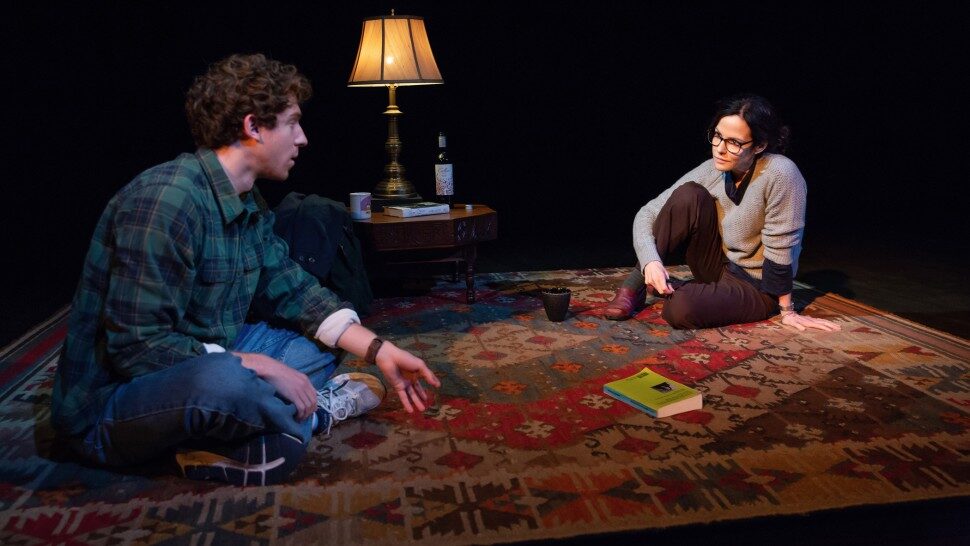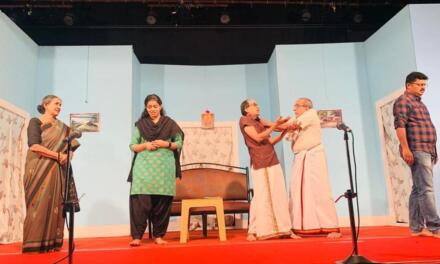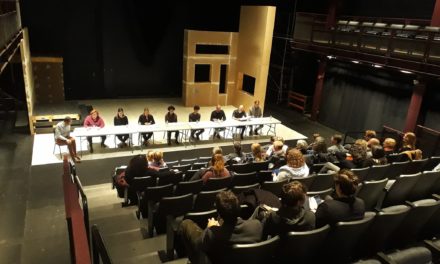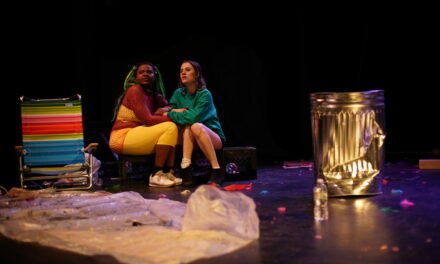Adam Rapp is a polarizing playwright. After bursting onto the scene in 2001 with Nocturne — a long, moving monologue by a man who accidentally kills his sister and then reinvents himself as a writer — he went on to write a number of other plays that mixed self-consciously poetic language with stockpiled shock effects such as nudity, masturbation, and vomiting that a lot of people found gratuitous.
His language has always been interesting, a pinch more crafted than most other contemporary playwrights’. Sometimes it sounds like a pure, raw colloquialism. Other times it’s built on precise, figurative sentences with complex syntax, third-person narrative passages, and startling metaphors that take a moment to process. If you like him you admire his demand that we listen closely. If you don’t, you probably consider his prose purple, show-offy and too bookish for theater—language that calls attention to itself for no dramatic reason.
I liked the prosiness of Nocturne. I admired the twists of event and speech in Red Light Winter, too, his 2005 play that begins with a failed suicide by hanging. So for me, his inventive, demanding language does sometimes rise to the challenge of expanding the imaginative world of the stage. I’ve also felt the opposite.
The Sound Inside is the best, subtlest, most fully realized Rapp play I’ve seen. It’s also his Broadway debut. A two-hander about a Yale creative writing professor and a precocious student that premiered at Williamstown last summer, it arrives in a stunning production directed by David Cromer at Studio 54.
Mary-Louise Parker, an actress who excels at intelligent vulnerability and effortless wit, is perfect casting for the lead: a novelist and story-writer named Bella Baird whose defining characteristic is her use of literary language as a social shield. The surface of The Sound Inside is a mystery, or meta-mystery, involving murder, betrayal, and suicide, but at root, I think, it’s a tale of psychic survival in which artful words are seized on as a lifeline, an idiosyncratic reason for living, by Bella.
The set (designed by Alexander Woodward), anomalously modest for Broadway, is a field of gloomy shadow occasionally broken by humble, unexceptional interiors occupying only a fraction of the wide stage—a grim faculty office, a plain living room, a shabby kitchen. Parker emerges from the darkness and proceeds to narrate her character’s backstory as if the audience were students being given a writing prompt.
She lays out a string of basic facts: Bella’s age (53), marital status (single, prefers solitude), faculty status (10 years tenured), lack of property and family attachments (parents dead), sense of attractiveness (“four or five degrees beyond mediocre, also known as ‘sneakily attractive.’”), professional reputation (respected). Also, not to forget her recent diagnosis of stage-two stomach cancer. Her speech is salted with clever metaphors and chiseled sentences that contradict her teaching advice: “Ironically, she often dissuades her students from describing a protagonist in too fine of detail. Readers only need a few telling clues.” More on that in a moment.
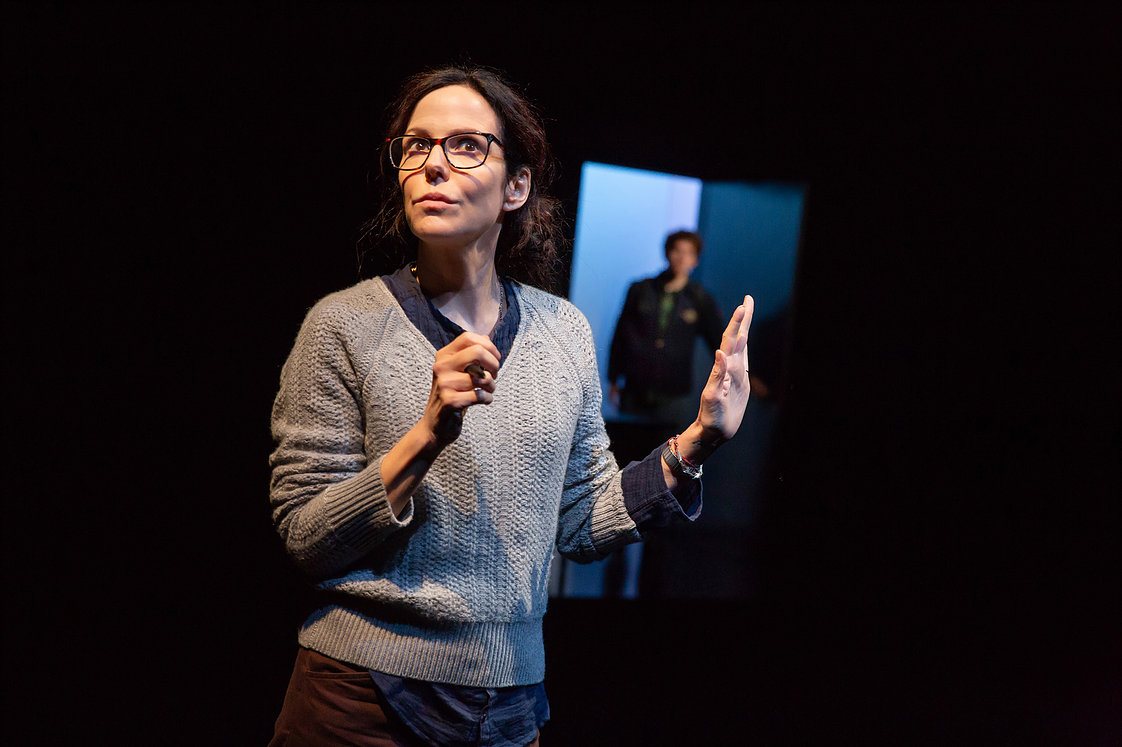
Photo by Jeremy Daniel.
The plot mystery begins when an amiably captious, irritatingly ambitious, improbably articulate freshman named Christopher Dunn shows up at her office without an appointment and fulminates about Twitter, enthuses about Dostoyevsky, and tells her how much he likes her class. Splendidly played by Will Hochman, sneakily attractive in his own way, this kid is so arrogantly self-possessed you barely believe his professed social phobias. Then you forget all that because you see that his perceptiveness and original metaphoric formulations appeal to Bella.
Turns out Chris is working on a novel. She, struggling for 17 years with her second one, invites him to dinner, and we’re off and running, set up to believe we’re in for an inappropriate affair. Maybe the theft of the kid’s writing too.
No such stock stuff for Rapp. The plot keeps ahead of the audience with a savviness worthy of its cliché-phobic writer-characters.
We’re led down a fascinating tunnel that—WARNING, SPOILERS HERE!—involves a murder in Chris’s novel meant to recall Raskolnikov’s that leaves us wondering about its autobiographical basis. Only trouble is, this murder, unlike Raskolnikov’s, really is unexplained, and Bella, his revered teacher, gushes over his mysterious use of the ellipsis. No truly fine writer would ever moon over that.
Chris’s plot is summarized in a troubling scene where he must decide whether to help Bella commit suicide because she presumes her cancer is incurable. Then there’s a rush toward an ending that, if you’re content with the self-sufficient profundity of ellipses, is a marvelous fringe of carefully ambiguous threads. It’s indeed a beautiful demonstration of how potent “a few telling clues” can be. We’re left with a knot of reverberant, intertwined questions about the nature of Bella and Chris’s interdependency, the source of violence in Chris’s novel, the survival of his manuscript and memory, the survival of Bella as a woman and an author, and even the concrete reality of Chris himself.
But if you’re not so quickly impressed with ellipses you have to look elsewhere for the larger holistic truth, the inner “sound” of the story referred to in the title. Maybe that truth is that though all of the writers involved here—Bella, Chris, and Adam Rapp—are clearly gifted, it’s equally evident that none will ever be a Dostoyevsky. The play, possibly, is about living with that.
This article was originally posted at Jonathan Kalb and has been reposted with permission. To read the original article, click here.
This post was written by the author in their personal capacity.The opinions expressed in this article are the author’s own and do not reflect the view of The Theatre Times, their staff or collaborators.
This post was written by Jonathan Kalb.
The views expressed here belong to the author and do not necessarily reflect our views and opinions.

